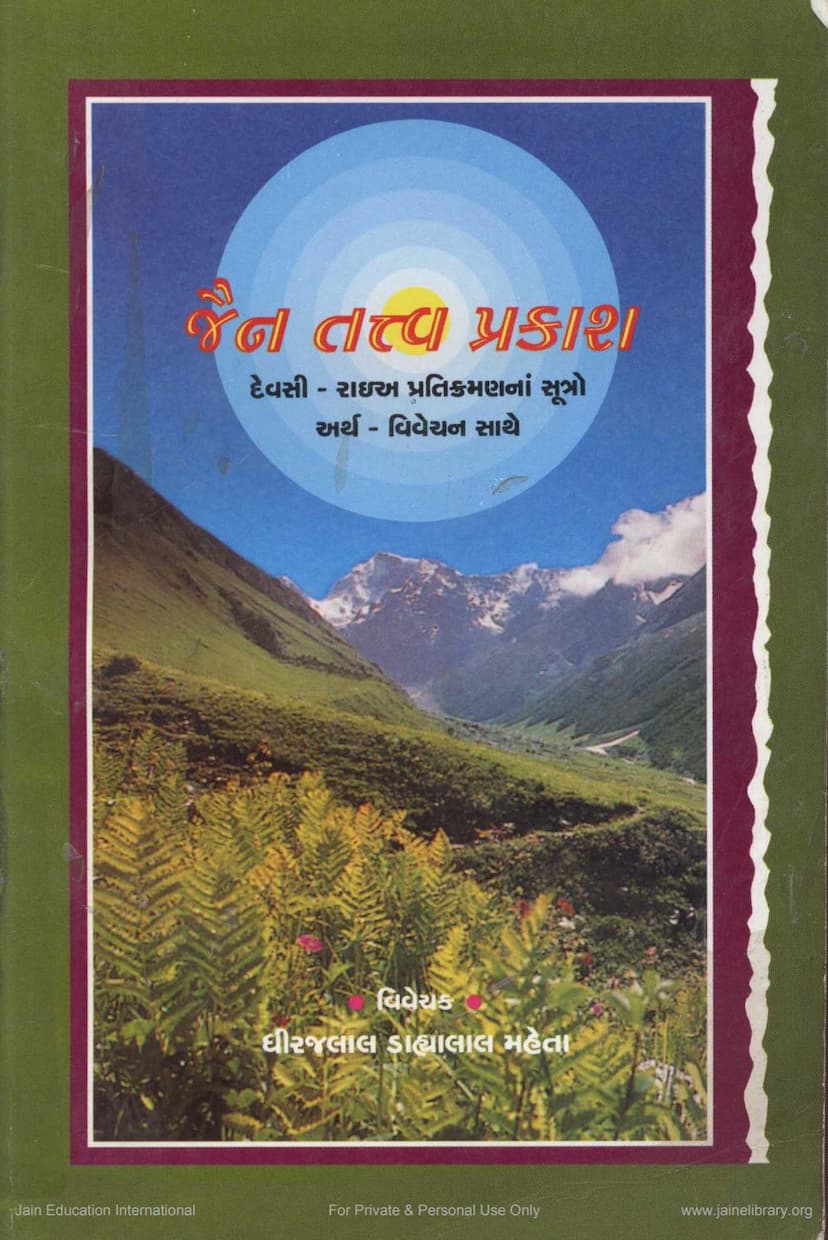Jain Tattva Prakasha 3rd Edition
Added to library: September 2, 2025

Summary
This book, "Jain Tattva Prakasha 3rd Edition" by Dhirajlal D. Mehta, published by Jain Dharm Prasaran Trust Surat, is a comprehensive guide to understanding Jainism, specifically focusing on the devotional practices of Devasi and Rai Pratikraman.
The author, Dhirajlal D. Mehta, presents the sutras used in these daily repentance rituals, accompanied by their meanings and detailed commentary. The book emphasizes the importance of integrating knowledge (Jnana) and action (Kriya) as the path to liberation, with Pratikraman being a crucial duty for the fourfold Jain community.
The text elucidates the five types of Pratikraman:
- Rai Pratikraman: Performed in the morning to confess sins committed during the night.
- Devasi Pratikraman: Performed in the evening to confess sins committed during the day.
- Paddhi Pratikraman: Performed every fortnight on the fourteenth day.
- Choumasi Pratikraman: Performed on the fourteenth day of Kartik, Phalguna, and Ashadha months.
- Samvachari Pratikraman: Performed on the last day of Paryushan (Bhadrapad Sud 4).
The book's primary aim is to provide clear explanations of the Pratikraman sutras, starting from the Navkar Mahamantra up to the Nirvan stotras, including their meanings and underlying philosophies. The author believes that understanding these mantras thoroughly will foster deeper devotion during the Pratikraman ritual.
The introduction also highlights the growing global interest in Jain philosophy and the book's intention to cater to those seeking fundamental knowledge of Jain principles. It explains the practical application of Jain spiritual tenets in daily life, emphasizing how spirituality can provide profound joy and guide individuals towards liberation.
The book delves into the profound meaning of the Navkar Mahamantra, explaining each of the five Parameṣṭhis (Arhant, Siddha, Acharya, Upadhyaya, Sadhu) and their significance. It also clarifies the concepts of Deva, Guru, and Dharma as represented within this mantra. The text further elaborates on the characteristics of Arhants and Siddhas, their thirty-four and eightfold virtues respectively, and the distinction between Arhants and Tirthankaras.
The commentary is presented in a simple and engaging style, using relatable examples and addressing potential doubts to make the profound Jain teachings accessible to a wide audience. The author expresses hope that through the study of these sutras and their meanings, readers will be able to achieve their own spiritual well-being. The book has gone through multiple printings, indicating its popularity and usefulness.
In essence, "Jain Tattva Prakasha" serves as a foundational text for understanding and practicing essential Jain rituals, offering spiritual guidance and promoting a deeper connection with Jain principles.